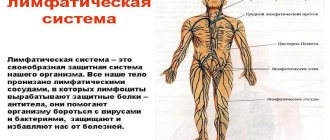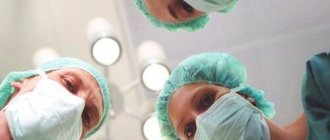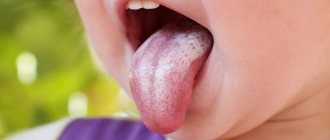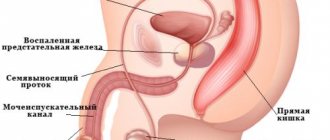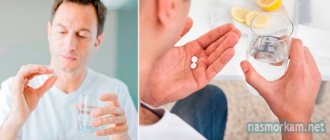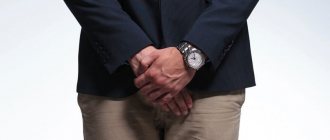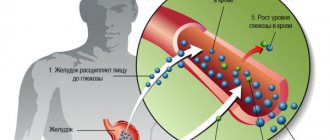General information
Balanitis is a disease characterized by inflammation of the glans penis. Usually the inflammation also spreads to the foreskin , and then the disease is called balanoposthitis . This is a very common inflammatory disease in men, which can occur with certain skin diseases (for example, psoriasis ), as well as due to traumatic causes, for example, irritation with urine, smegma, clothing or various bacteria, viruses, against the background of decreased immunity, diabetes, urethritis , as well as when hygiene standards are not observed as prevention of balanitis.
There are several types of balanitis:
- traumatic balanitis manifests itself in the formation of cracks, redness and swelling after coital or other trauma;
- balanitis, which occurs as a result of irritation from the accumulation of smegma, urine, and exposure to detergents, is manifested by swelling of the glans penis and its redness;
- infectious balanitis.
The latter type, in turn, is divided into several types depending on the infection:
- candidiasis is a manifestation of urogenital candidiasis in men, and occurs as a result of sexual intercourse with an infected partner, however, it can also occur as a result of taking antibiotics, as well as in patients suffering from diabetes mellitus , cachexia . It is characterized by swelling and redness of the glans penis, with slight peeling; spots of various sizes may form. There is a cheesy discharge with an unpleasant odor, burning and itching of the glans and foreskin of the penis;
- chlamydial , which usually accompanies chlamydial urethritis ;
- mycoplasma most often develops simultaneously with mycoplasma urethritis ;
- trichomonas usually occurs in men who have a long foreskin, and manifests itself in the form of erosions and erythema of the glans penis;
- circinar balanoposthitis manifests itself in the formation of large, smooth, bright red spots on the head of the penis, and often accompanies chlamydial infection ;
- xerotic balanitis is also a manifestation of chlamydial infection, as well as Reiter's syndrome , and is characterized by peeling of the head and its increased dryness, as well as itching;
- anaerobic balanitis (Gardnerella-associated balanoposthitis), caused by anaerobic gram-negative bacteria, manifests itself in the form of erosions and swelling of the foreskin, a sticky coating on the glans and an unpleasant odor;
- Herpetic balanitis manifests itself in the formation of a herpetic rash on the head of the penis.
Special mention should be made of allergic balanoposthitis , which are manifestations of genital allergies. They are characterized by the appearance of swelling and itching of the skin, spots, and rashes. Often occur after using condoms or local contraceptives.
Causes and symptoms of the disease
If inflammation of the foreskin is observed in men, the causes of its occurrence can be divided into infectious and non-infectious. Let's look at each of these reasons in more detail.
Inflammation of infectious etiology
Diseases of the foreskin in men are caused by pathogenic microorganisms. The most common microbes in this case are:
- Trichomonas;
- gonococci;
- mycoplasma;
- chlamydia;
- gardnerella;
- human papillomavirus;
- genital herpes.
In addition to inflammation of the frenulum of the foreskin , infections cause the following additional symptoms:
- head change;
- severe swelling;
- the appearance of plaque under the foreskin, which causes an unpleasant odor;
- itching, burning and other discomfort in the groin.
If a man’s foreskin hurts , then to this characteristic symptom pain is gradually added at the time of urination, as well as during sexual intercourse.
Non-infectious inflammation
There are cases when a man’s foreskin becomes inflamed as a result of somatic diseases. The most common non-infectious pathologies are:
- psoriasis;
- ringworm;
- pemphigus;
- diabetes.
Inflammation in men can also develop as an allergic reaction to a certain irritant. This can also be the natural lubrication of the partner, secreted at the moment of intimacy.
General signs of inflammation of the foreskin, regardless of the cause of their appearance:
- severe burning sensation, gradually developing into acute pain;
- when palpating the genitals, a man experiences severe unbearable pain;
- increased body temperature, especially for infectious diseases;
- headache;
- nausea;
- rashes along the penis.
Causes of balanitis
The causes of balanitis, in general, are not varied. The main cause of the occurrence and development of the inflammatory process is the accumulation of smegma under the foreskin, where infection develops.
Local factors for balanoposthitis include:
- phimosis;
- with urethritis or other infectious diseases, pus is released from the urethra, which leads to inflammatory processes and balanitis;
- failure to comply with hygiene rules, which leads to the accumulation of smegma under the foreskin, in which infection develops;
- chronic irritation of the glans penis with urine, which is typical for patients with diabetes;
- coital or other trauma, excessive masturbation (traumatic balanitis);
- skin irradiation due to radiation therapy.
Infectious factors for the occurrence of balanitis include various viruses , fungi , bacteria , for example, yeasts, mycoplasmas, streptococci, staphylococci and others. Often balanoposthitis is the result of complications of sexually transmitted diseases - trichomoniasis , chlamydia , gonorrhea , syphilis . Also the cause of balanoposthitis are skin diseases such as seborrheic dermatitis , psoriasis , contact dermatitis , Queir's erythroplasia , which also appear on the skin of the penis. In addition, among the causes of balanitis, doctors identify genetic and autoimmune factors.
Useful tips
Regardless of what course of treatment a man undergoes, vitamin complexes must be included in it. Vitamins B and C are especially important. With their help, it will be possible to increase the body's defenses, as well as neutralize the effects of antibiotics.
Vitamins should be taken for several months. After completing the course of treatment, it can be repeated again, up to two or three times a year.
During the treatment period, it is important to adhere to proper nutrition. All dishes should be light and easily digestible. Give preference to fish, lean meats, fruits and vegetables. Alcoholic drinks, spicy foods, seasonings, smoked foods and fast food must be completely excluded.
In addition, you should drink as much liquid as possible - water, compotes, fruit drinks. All this accelerates regeneration processes and improves the effects of antibiotics. For the entire period of treatment, you should abstain from sexual intercourse, and also observe the rules of personal hygiene.
The therapeutic course is prescribed by the doctor, who also decides what the most effective remedies can be used for balanoposthitis. With the right approach to treatment, the patient can quickly get rid of his problem, and he can return to a full life.
Symptoms of balanitis
The symptoms of balanoposthitis are very diverse and depend on the type of the disease itself. Local symptoms of balanitis are as follows:
- swelling and redness of the glans penis;
- erythema of the foreskin;
- burning and itching;
- purulent discharge from the opening of the foreskin with an unpleasant odor;
- dryness and irritation;
- the appearance of ulcers, erosions on the head of the penis;
- nodular rash;
- the appearance of cracks and crusts;
- pain when opening the head and during sexual intercourse;
- premature ejaculation.
Common symptoms of balanitis are:
- general malaise, weakness;
- swollen lymph nodes , including in the groin;
- rashes in the oral mucosa.
If treatment for balanitis is delayed, ulcers may appear, which are accompanied by pain when walking and when urinating. As complications of balanitis, inflammation of the lymph nodes of the penis, as well as gangrene of the penis, .
List of effective drugs
Modern pharmacology offers a significant number of medications aimed at eliminating inflammatory processes in men. Depending on the severity of the symptoms, the attending physician prescribes the following medications:
- Anti-inflammatory drugs. These include antibacterial ointments, creams, and solutions. When applied correctly and regularly, they relieve inflammation.
- Painkillers. Burning, itching and irritation of the foreskin in men is treated with painkillers .
- Regenerative drugs. They have a regenerating effect, thanks to which you can get rid of cracks on the penis.
- Antimicrobial and antifungal medications. These drugs suppress the activity of pathogenic microorganisms, that is, inflammation of an infectious nature.
Diagnosis of balanitis
The diagnosis of balanitis is made on the basis of laboratory and clinical tests. The doctor prescribes tests for sexually transmitted diseases. Externally, balanitis is detected without difficulties; it is more difficult to find out the cause of its occurrence. To do this, the patient undergoes a serological test for syphilis, a bacterioscopic examination for trichomoniasis and gonorrhea, an examination for genital herpes , a PRC for fungi that cause candidiasis, and for anaerobic flora. In addition, a consultation with an allergist and a blood test for sugar levels are prescribed.
https://youtu.be/M_xA3-2VcFk
Treatment of balanoposthitis
During therapy, it is important not to deviate from the following recommendations:
- During intimacy, you must use a condom.
- The sexual partner must be tested to exclude STDs.
- If an STD is detected, both sexual partners should undergo treatment.
- Hygiene of the intimate area must be of high quality. The genitals should be washed with soap, and the affected areas should be treated with hydrogen peroxide (pharmacy solution).
- Baths with a solution of potassium permanganate or furatsilin solution help to disinfect the skin well.
- You should wear underwear made from natural fabrics. Synthetic materials should be abandoned.
- It is not recommended to change sexual partners during treatment.
Effective and quick treatment of balanoposthitis is always prescribed based on the results of the examination, since they provide reliable information about the causes that caused them and the stage of the disease.
Prevention of balanitis
The main preventive measures are strict adherence to hygiene rules and treatment of phimosis and other diseases that can lead to balanitis. You should wash your penis 2 times a day, as well as before and after sexual intercourse, with warm water, opening the head and cleaning it. Preventive measures also include treatment of diabetes, protected sex, and proper antibiotic treatment. If you detect the first signs of the disease, you should urgently contact a urologist.
What is the treatment for balanitis?
Therapy primarily depends on the cause of the disease. It is very important to eliminate before treatment all unfavorable factors that can only aggravate the situation.
In addition, if you are sexually active, then treatment becomes relevant not only for you, but also for your sexual partner.
So, the treatment of this inflammatory process in the foreskin occurs as follows:
1.The basis of each therapy is compliance with the rules of personal hygiene. This includes daily washing of the genitals with warm water at least 3 times a day and drying them thoroughly without the use of alkaline soaps and disinfectants. Do not overdo it with hygiene; use non-greasy lotions for care. Don't forget to change your underwear daily and avoid synthetic materials.
2. In most cases, the damage is local in nature, so local treatment with drugs is prescribed depending on the identified cause of the disease :
- for a bacterial cause , ointments based on an antibiotic are prescribed. In most cases, an ointment or gel with metronidazole or tetracycline is used, which have a fairly wide spectrum of action. Apply to affected areas morning and evening for several weeks. Levomekol ointment based on chloramphenicol and methyluracil is also often used, which is applied to the affected area 3 times a day. When applying the ointment, you can use gauze pads that are soaked in the drug. They are applied to the affected area and bandaged for several hours, then changed.
- for a fungal cause, ointments with an antifungal effect, so-called antimycotics, are prescribed. Mostly clotrimazole is prescribed, which acts against many fungi, which is quite enough to defeat the infection. It is applied to the affected area 2-3 times a day for 4 weeks. For mixed causes, ointments are prescribed (for example, Triderm), which, along with an antifungal effect, also have an antimicrobial effect, as well as a symptomatic one, relieving unpleasant itching and redness. If at the end of the course of treatment no positive effect is observed, the diagnosis should be reconsidered.
— with a viral cause, getting rid of the disease is often quite difficult; it is recurrent in nature with periods of exacerbations and remissions. In this case, antiviral drugs are prescribed both locally and in tablets.
- ointments based on hydrocortisone are used in case of an allergic or autoimmune cause of the disease, as well as for anti-inflammatory purposes and alleviation of the condition. Typically, prednisolone or hydrocortisone ointments (Oxycort) are prescribed. Apply to the affected area 1-3 times a day for 1-2 weeks. If hormonal ointments do not help, then pimecrolimus ointment, which has a stronger anti-inflammatory effect, is recommended.
3. Disinfecting baths with chamomile (calendula, sage) and antiseptic agents (potassium permanganate, furatsilin, miramistin) have an anti-inflammatory effect. However, they are recommended if the disease is not complicated by phimosis. The duration of the procedure is no more than 15 minutes, after which the penis is carefully dried with a dry cloth and treated with an antiseptic.
4. Ointments for wounds with an active substance, such as dexpanthenol, promote rapid skin regeneration and relieve itching in the affected area. Apply to the affected area 2-4 times a day; in case of an infectious cause of the disease, the penis is first treated with an antiseptic solution.
5. Antiseptic solutions can have antimicrobial, antifungal and anti-inflammatory effects. The most commonly used are Chlorhexidine, Fukortsin, Miramistin. They are often prescribed for the formation of weeping ulcers and purulent wounds.
You need to know that ointments and gels cannot be used if there are:
- -trophic ulcers,
- - malignant neoplasms,
- -necrosis,
- - cutaneous tuberculosis,
- - allergy to the drug.
6. Oral antibiotics are prescribed only in cases of severe disease with an established bacterial cause, as well as in the case of sexually transmitted infections. They are not prescribed for viral, allergic or fungal causes of the disease. Widely used antibiotics are Azithromycin, Ciprofloxacin, Doxycycline, Levomycetin and Erythromycin.
7.Surgery is indicated in case of frequent exacerbation of the disease. If phimosis is present, circumcision of the foreskin is recommended. Circumcised men are generally less susceptible to infections.
During the treatment period, it is better to avoid sexual intercourse, but if this does happen, then use a condom!
If the treatment does not give positive results, then this may indicate a malignant disease.
In most cases, balanitis responds to treatment within three to five days.
Complications of balanitis
Complications of balanitis can include phimosis and myal stenosis, which manifests itself in a narrowing of the external opening of the urethra, which leads to urination disorders, as well as cystitis , urolithiasis . Also, if balanoposthitis is not treated, then the sensitivity of the penis may decrease, which leads to a decrease in the quality of sexual life. If the inflammatory process moves into the urethra, urethritis may begin. Some forms of balanitis lead to necrosis of the glans penis .
Which doctor should I contact?
If you notice the first unpleasant symptoms, you should contact a therapist, who will give you a referral to a urologist. The doctor will conduct a detailed examination and make a smear from under the foreskin for bacteriological examination. The analysis will help exclude the presence of gonococci, chlamydia and other sexually transmitted infections.
The anaerobic form of inflammation is characterized by frequent relapses. Any provoking factor can restart the process. If an infection is detected in one partner, both should undergo treatment.
The female version of balanitis and posthitis is called vaginitis and is treated with the same medications; a course of the drug is prescribed by a gynecologist.
Miramistin, Chlorhexidine and other solutions for balanoposthitis
Local treatment for balanoposthitis is also carried out using solutions containing antiseptics. A man can carry out these activities independently, at home.
Widely recommended solutions of potassium permanganate, or potassium permanganate, should be taken with caution. This is due to the fact that the dissolution of potassium permanganate crystals in water does not occur completely, and chemical trauma to the skin or mucous membrane to which this solution is applied can occur.
Of the solutions, it should be noted an aqueous solution of Chlorophyllipt , which has an active antibacterial and anti-inflammatory effect. Wash with Furacilin, Rivanol, Dioxidin .
For ulcers and erosions, you can cauterize them with the antiseptic drug Fukortsin or Castelani liquid . It acts on both bacteria and fungi.
Chlorhexidine has proven effectiveness for balanoposthitis. Its full name is chlorhexidine bigluconate. It has an antiseptic and anti-inflammatory effect and is used in the form of baths, instillations or irrigations.
Miramistin has a similar effect in the case of balanoposthitis . Both of these drugs have an antibacterial effect on a wide range of microorganisms, but they should be used with caution, as they can cause dry skin and mucous membranes.
How to use Miramistin for balanoposthitis?
The use of Miramistin for balanoposthitis is preferably prescribed by a doctor and under his supervision. Surface treatment is carried out after hygiene measures from one to several times a day.
Non-medicinal remedies include folk methods, for example, the use of decoctions and infusions of antiseptic herbs, chamomile, currants, sage, oak bark, and in some cases soda. Such remedies are usually used for mild forms of balanoposthitis, and before using them in an adult or child, it is better to consult a doctor.
Features of diet and lifestyle
To successfully cure balanoposthitis at home, you will have to give up habits that are harmful to your health and follow a work and rest schedule. You need to go to bed no later than 23.00, sleep should be at least 6-8 hours. Hiking in the fresh air, swimming, and cycling are useful. Regular exercise stimulates weakened immunity and normalizes metabolic processes in the body.
During treatment of balanoposthitis, you need to eat a balanced diet.
The menu must contain fresh products. The basis of the diet consists of vegetables, fruits, juices and water. Decoctions with a mild diuretic effect will help relieve swelling faster.
During therapy, sexual contact is limited. And subsequently, men need to avoid promiscuity and use barrier contraception to prevent infection with STDs.
Basic list of antibiotic tablets for balanoposthitis
Antibiotics for balanoposthitis are often taken in tablets, and they are prescribed taking into account the etiology. Since balanitis and balanoposthitis can be caused by any microorganisms, including Escherichia coli, streptococci, staphylococci, Neisseria, as well as Koch's bacillus, clostridia and other microorganisms, both aerobic and anaerobic, treatment is first carried out with antibiotics with the broadest spectrum of action, and then adjusted for sensitivity.
- Antibiotics are not taken orally for mild forms of balanoposthitis . Systemic antibacterial therapy is used either in severe cases, for example with a purulent form, or with sexually transmitted diseases.
- Antibiotics are not used for fungal infections, allergies and viral diseases.
- Among drugs with a wide spectrum of action, antibiotics from the group of Levomycetin and Doxycycline .
- Macrolides are used - Erythromycin, Oletetrin, Roxithromycin .
- Quinolone derivatives are also used, for example Nalidixic acid or Nevigramon , nitrofuran derivatives ( Furagin ) and hydroxyquinoline derivatives ( Nitroxoline ).
- Azithromycin showed good results .
- Of the sulfonamides, you can use Biseptol .
- In case of a specific infection, penicillin drugs, cephalosporins, for example Tsiprolet .
- For candidal balanoposthitis, antifungal drugs are used, such as Clotrimazole or Flucanozole .
- For chlamydia and ureaplasma infections, drugs from the metronidazole group .
Prerequisites for the disease
The main factors contributing to the development of the disorder:
- Severe hypothermia (short-term or long-term).
- A sharp or prolonged decrease in immunity. The disorder is not the root cause of posthitis, but affects the likelihood of infection by pathogenic microorganisms.
- Using incorrectly selected hygiene products.
- Violation of personal hygiene rules.
- Wearing tight underwear for a long time.
- Physiological features of the structure of the genitals (for example, phimosis).
Sometimes pathology develops against the background of somatic diseases. For example, inflammation of the foreskin in men can be due to high blood sugar levels and certain disorders of the pancreas. The condition is also included in the list of the most frequently manifested symptoms of STDs and STIs (sexually transmitted diseases and infections). Therefore, leading a promiscuous sexual life is a predisposing factor to fasting.
Another common cause is injury. An organ can become inflamed due to physical impact or a chemical burn (for example, after the application of dangerous or harmful substances). This problem is often encountered by people who have had genital papilloma removed and have undergone surgery on the genitals. The situation is aggravated in case of failure to receive medical care and non-compliance with doctor’s orders.
The use of folk remedies
Drug treatment of balanoposthitis can be combined with the use of alternative medicine recipes. Oak bark, calamus root, and plantain have bactericidal, anti-inflammatory, astringent and disinfectant properties. Peppermint, calendula, and thyme help treat fungus.
Herbs can be brewed with boiling water (2 tablespoons per 0.5 liter) and baths can be made in the prepared solution. Do not use hot water - this will lead to burns and increase inflammation. The solution should be at room temperature.
Collection recipe for balanoposthitis:
- calendula flowers - 1 tablespoon;
- boiling water – 250 ml;
- sea buckthorn oil – 1 teaspoon.
The herb is brewed, allowed to brew for 2 hours, then filtered and cooled. Add sea buckthorn berry oil to the decoction, ½ tsp. aloe vera juice and mix everything thoroughly. A piece of cotton cloth is soaked in the resulting product and applied to the exposed head. You need to keep the compress for 5–10 minutes. The procedure is repeated daily before bed until complete recovery.
Treatment with folk remedies is permitted only after examination by a doctor. With purulent balanoposthitis, intense inflammation, and a closed preputial sac, warming and oil applications are dangerous. Such methods will increase swelling and complicate the outflow of pus!
For purulent discharge, solutions of Dioxidine, baking soda, potassium permanganate, Furacilin, and Chlorhexidine have a good effect.
Doctors recommend making baths out of them. To prepare the remedy, take an ampoule of Dioxidin 1%, warm it to room temperature, dilute it with saline 1:1 and add it to 0.5 liters of warm water. The penis is lowered into the container and held for 10 minutes. Instead of Dioxidin, you can dilute ½ teaspoon of soda or 2 crushed Furacilin tablets for the same volume of liquid.
Lifestyle and proper nutrition
When treating balanoposthitis at home, it is necessary to make adjustments to your lifestyle . A full night's sleep, frequent rest, and avoidance of stress will help speed up recovery.
It is advisable to walk a lot, strengthening the body's natural defenses. Morning exercises, jogging, swimming, cycling and gym classes will help strengthen your immune system.
will help improve the patient's condition . The menu includes fresh, stewed or boiled vegetables (at least 500 g per day), fresh fruits and berries, and dairy products.
Instead of fatty red meat, it is better to eat fish and lean poultry; solid vegetable and animal fats are replaced with unrefined oils: corn, soybean, olive, sunflower.
What causes the disease and how the risk zone is determined
Anaerobic inflammation is provoked by bacteria in the active stage, you need to take care of the body. A number of reasons have been identified that allow bacteria to cause an inflammatory process:
- lack of proper hygiene;
- weak immunity;
- tight underwear, synthetic products of dubious quality are especially dangerous;
- overheating of the genitals, as well as hypothermia;
- somatic diseases: diabetes mellitus;
- the foreskin is too narrowed;
- sexual partner with a bacterial infection of the genitals;
- predisposition to allergies;
- overweight;
- inflammation of the genitourinary system;
- consequences of postoperative interventions.
The manifestation of the anaerobic form will be a secondary post-painful reaction to treatment with potent antibiotics, which can treat well, but at the same time weaken the body’s protective barriers. Often anaerobic balanoposthitis is detected as a consequence of Gardinellosis urethritis.
The disease manifests itself in young and old age.
Anaerobic balanoposthitis, chronic, erosive and chlamydial: how to treat?
Some specific forms of balanoposthitis have features in treatment. In case of anaerobic balanoposthitis, treatment should include both systemic therapy and local measures.
- Antibiotics are used from the group of lincosamides ( Lincomycin ) and nitroimidazoles ( Metronidazole, Metrogyl, Tinidazole and others). It is better to determine sensitivity and adjust antibiotic therapy after receiving the results.
- They use vitamin complexes and immune stimulating agents.
- A solution of potassium permanganate and hormone-containing creams are used locally; if local ulcers or erosions appear, they can be cauterized with silver-based preparations.
When the disease is erosive balanoposthitis, treatment requires identifying the causative agent and primarily prescribing etiotropic drugs.
- A distinctive feature of the treatment of this form will be frequent washing, up to four times a day, with antiseptic solutions .
- You can use Levomekol , which has a broad antibacterial spectrum of action and promotes tissue regeneration.
- Fukortsin, Chlorophyllipt, cauterization with silver preparations , for example Protargol are also used .
If chlamydial balanoposthitis is detected, treatment should be carried out systemically, with antiprotozoal drugs, and locally with antiseptics and ointments.
- Chlamydia balanoposthitis often gives complications in the form of urethritis and becomes chronic, so its treatment should be carried out as early as possible and strictly following all the doctor’s instructions. In case of chronic balanoposthitis, treatment should be aimed at increasing immunity and eliminating the pathogen by both local and general means.
- If to chronic balanoposthitis , then surgery is performed.
- In some cases, circumcision is performed.
In all cases of balanoposthitis that suggest an infection, it is imperative to treat not only the sick person, but also his partners with whom he had unprotected sexual intercourse.
In both children and adults, remedies for balanoposthitis should be selected individually, taking into account sensitivity and the pathogen or effect on the etiotropic factor, after examination and under the supervision of a specialist.
After the symptoms of inflammation with balanoposthitis disappear, a re-examination and tests are carried out to confirm the cure for this disease. Previous balanoposthitis does not guarantee that it will not recur, especially with poor hygiene and phimosis for all ages and promiscuity in adults.
The price for treatment of Balanoposthitis consists of a consultation with a urologist, tests and the cost of medications , and the most expensive will be tests and determination of sensitivity to antibiotics. A consultation with a urologist in different cities costs from 500 to 1,500 rubles.
Reviews on the forums about the treatment of balanitis and balanoposthitis are different. The timing of cure and the quality of cure for balanoposthitis depend not only on the doctor, but also on the form of the disease, the patient’s compliance with hygiene and all recommendations and instructions.

